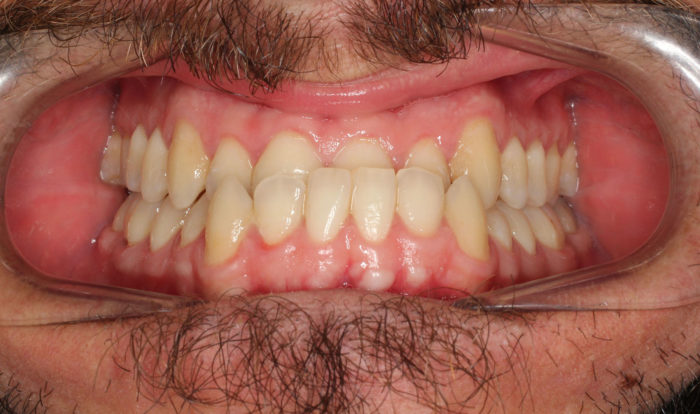
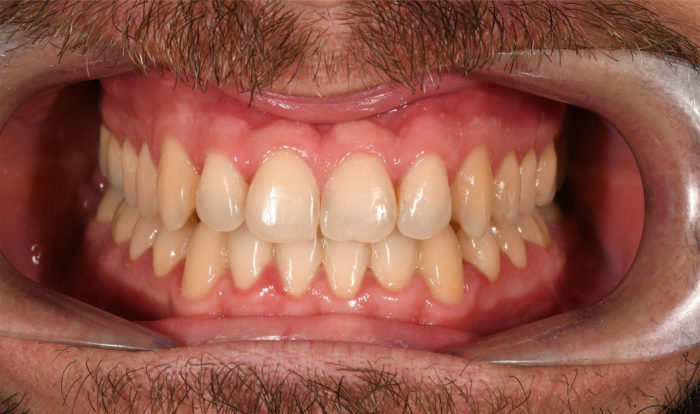
Clinical case n°1
Complete upper and lower lingual treatment performed without orthognathic surgery to correct the patient’s inverted anterior bite.
Treatment lasted 21 months and resulted in a perfect anterior occlusion with good mismatch of the inter-incisal middles, as well as a perfect Class I canine and bilateral molar. Bonded retention wires were positioned at the end of treatment when the fixed appliance was removed from the upper and lower incisivocanine blocks.
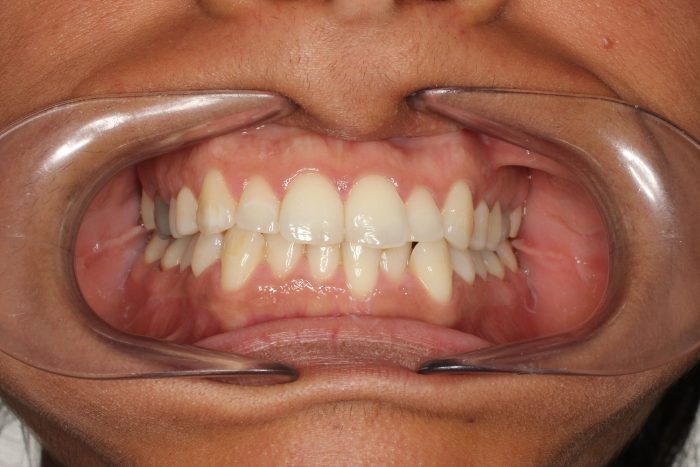
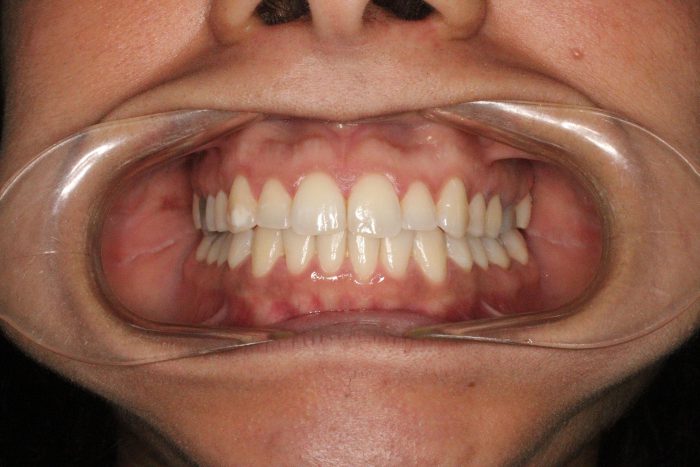
Clinical case n°2
Complete treatment with top and bottom aligners to correct a malocclusion with moderate dental crowding. Over a period of 8 months, the treatment achieved perfect mismatch between the incisors, as well as a good bilateral Class I canine and molar occlusion. Bonded retention wires were positioned on the upper and lower incisivo-canine blocks, along with retention splints to be worn part-time over a period of one year.
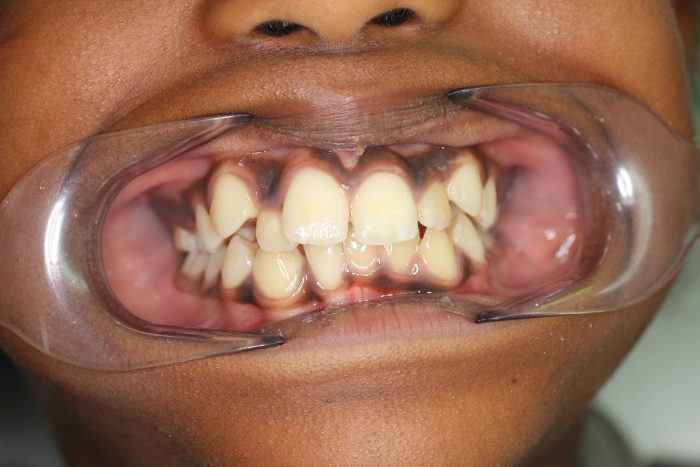
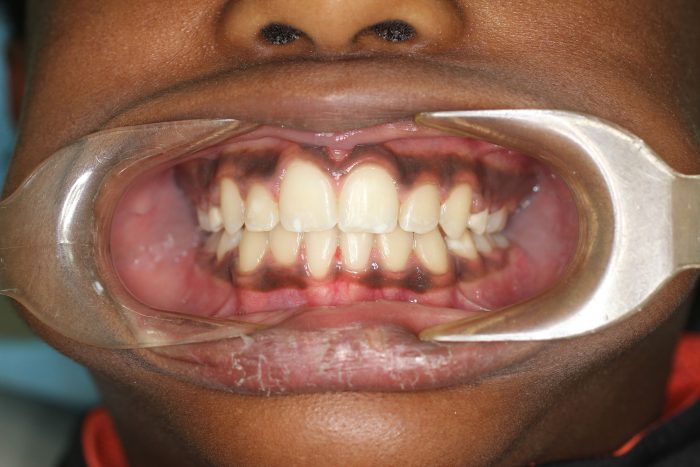
Clinical case 3
Complete treatment with a full upper and lower multi-ring fixed appliance, with extraction of the first four premolars to correct the severe dental crowding. Over a period of 17 months, the treatment achieved a perfect bilateral posterior occlusion in class I molar and canine, as well as good inter-incisal correspondence. Retention wires were bonded to the incisivocanine blocks of the 2 arches, and thermoformed retention splints were worn part-time over a period of one year.
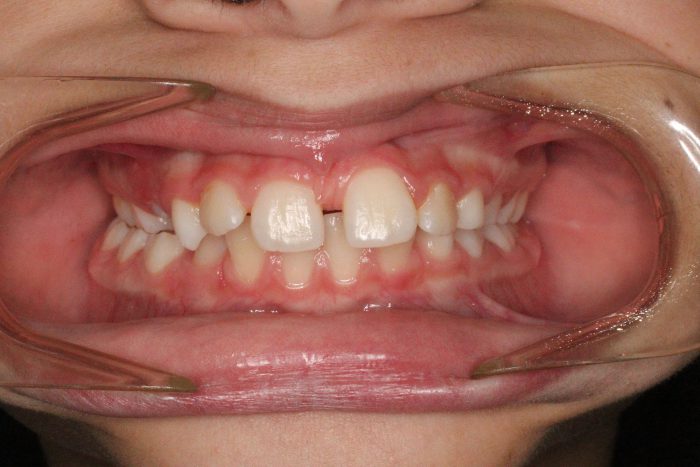
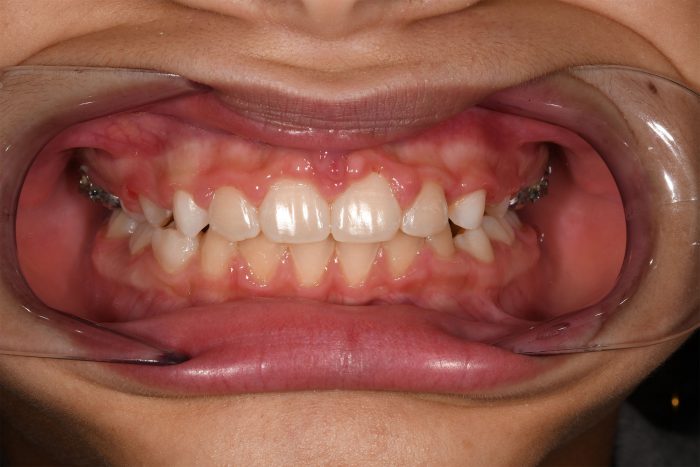
Clinical case 4
Interceptive treatment generally performed on children between 8 and 11 years of age in mixed dentition with both permanent and deciduous teeth, most often when the upper lateral incisors have completed their eruption on the arch. The patient presented for closure of his anterior diastema and correction of his anterior overbite. Over a 6-month period, a fixed appliance partially positioned in the upper arch closed the anterior space and optimized the vertical positions of his incisors. A stabilizing splint was recommended, with 6 months’ part-time nocturnal wear after removal of the fixed appliance. A reassessment will be carried out in full permanent dentition when the last deciduous teeth are lost, generally with a second phase of fixed treatment lasting 15-20 months when a first phase of interceptive treatment has been carried out beforehand.
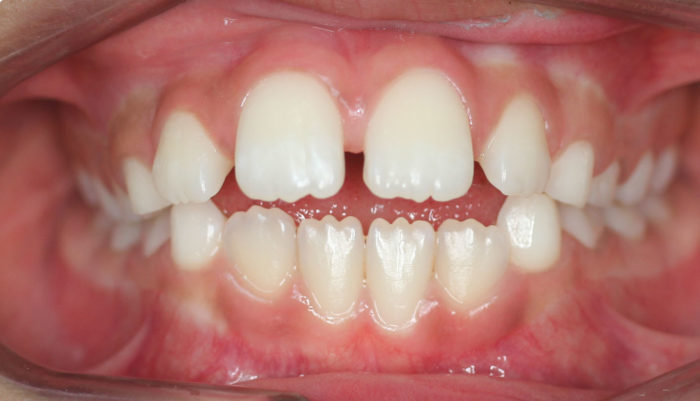
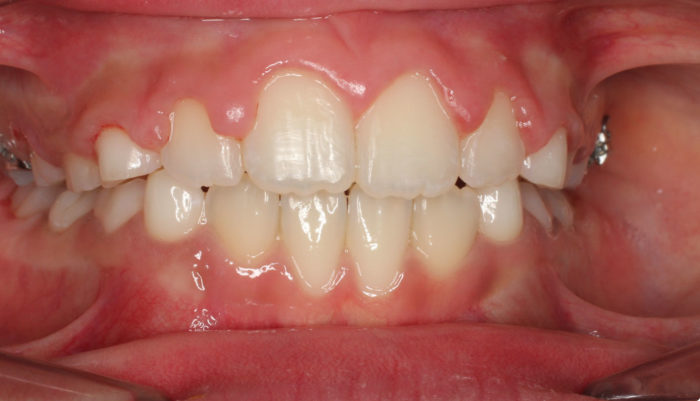
Clinical case n°5
Treatment of an anterior open bite in Class II mixed dentition with a fixed multi-ring appliance partially positioned in the upper arch with a retro-incisor grid to suppress persistent thumb sucking. This first phase of interceptive treatment lasted 5 months and closed the anterior open bite, significantly improving daily masticatory function.

